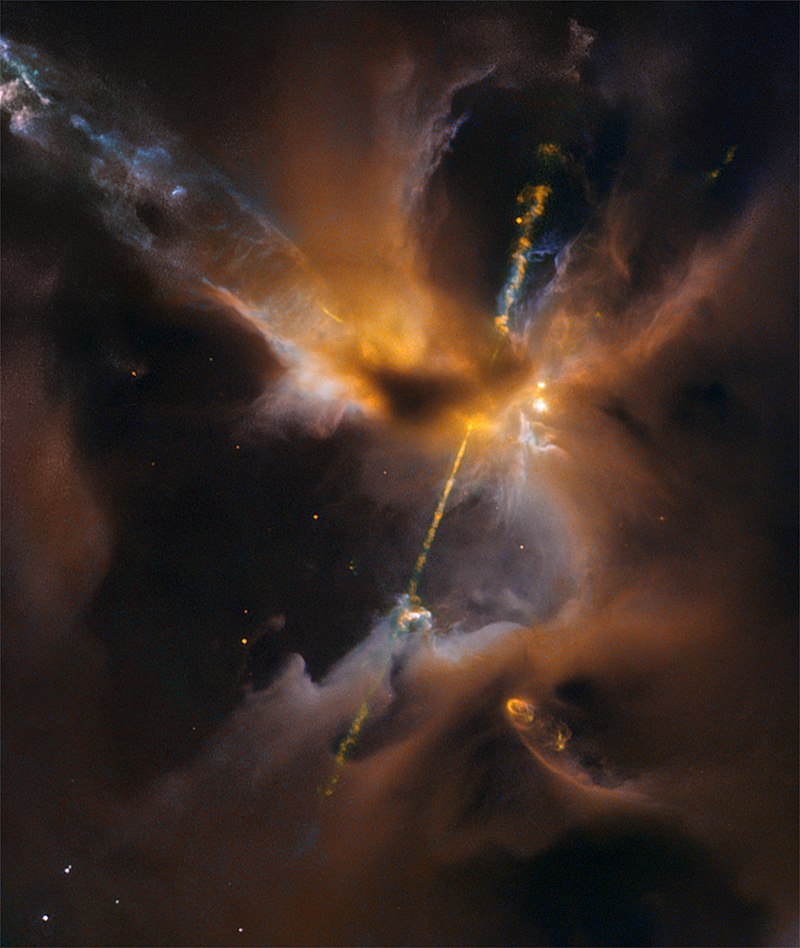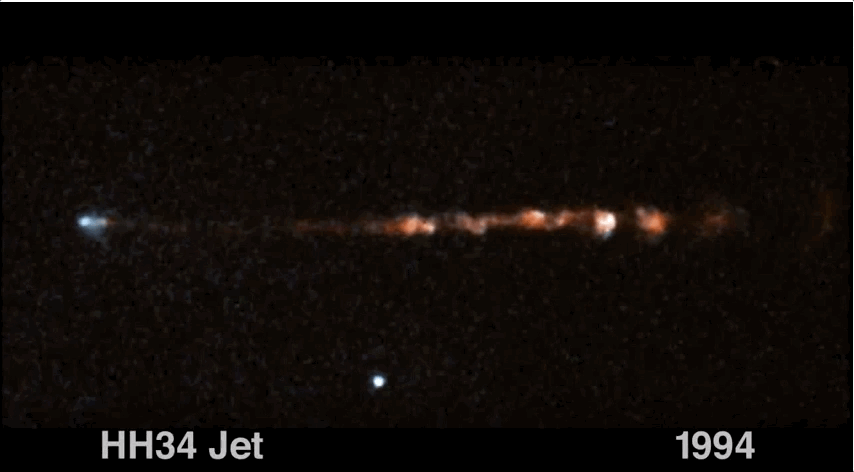An Astronomically Powerful Debut: Herbig-Haro Objects
July 5, 2018
A Stellar Outburst

(Click image to enlarge)
Image Credit: ESA/Hubble (CC BY 4.0)
Obscured by the clouds of interstellar dust from which it formed, the bright orange protostar in this image fires off narrow jets of particles from its poles, resulting in the shockwave cavities and illuminated gas clouds around it.
What's Going On Here?
It's not every day that you see an astronomical phenomenon taking place over the kind of timescales we can observe in a human life, but Herbig-Haro objects are just such an event.

Unlike supernovas, which are "transient" astronomical events that can brighten to extreme luminosities before dimming back out of sight within a few years, Herbig-Haro objects are more persistently visible—if you've got the right equipment! This time-lapse video was taken over the course of more than a decade, using the Hubble Space Telescope.
And while a supernova occurs at the end of a star's lifetime, Herbig-Haro events signal just the opposite—the birth of a new sun. As a cloud of gas collapses thanks to gravity, the nascent star's magnetic field causes particles blasting out from it to emerge in narrow columns. When these jets hit the surrounding gas and dust, they form bright, luminous clouds.
Ordinarily, things in astronomy don't change much over a few years—our galaxy is more than a hundred thousand lightyears from edge to edge, and it takes hundreds of millions of years for it to make a single rotation. In the relatively short time we've been able to see deep-sky objects in great detail, not much appears to have changed.
But the jets in the image above, surrounding Herbig-Haro Object 34, are moving at close to half a million miles an hour, and since HH34 is only a few thousand lightyears away, we can see the burstlike patterns of energy emanating from the newborn star, as energetic partices rocket away from it.














